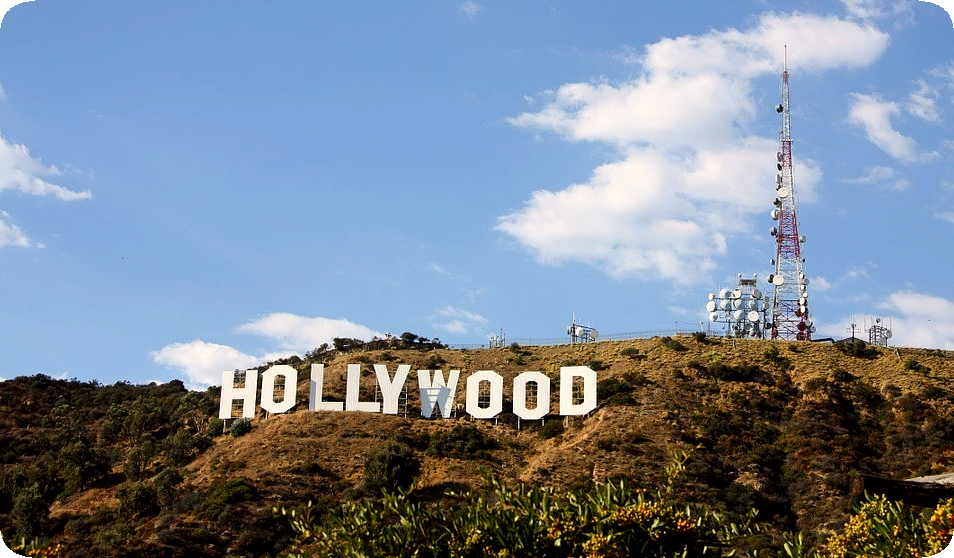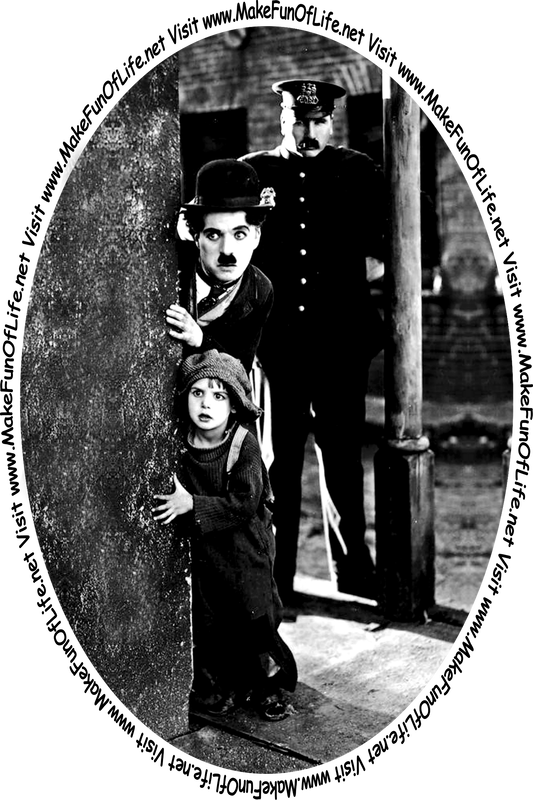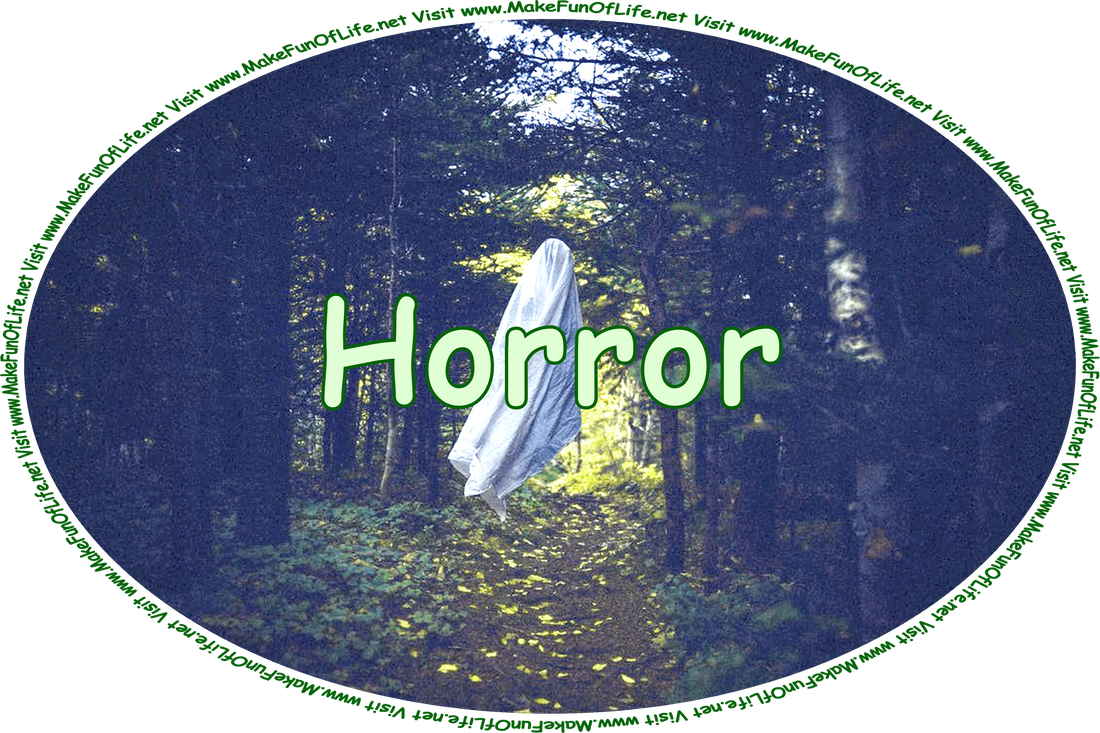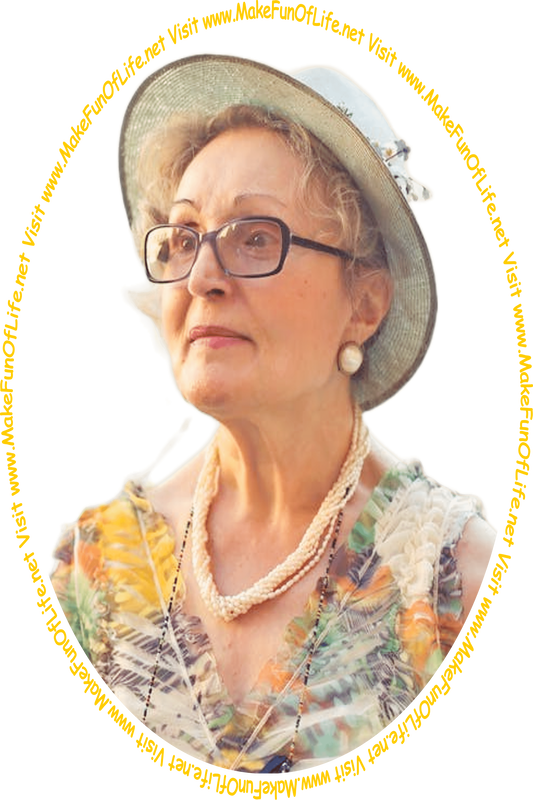Pirate Pete: Why couldn’t the eleven-year-old pirate get in to see the movie?
Buccaneer Bob: Because it was rated, ‘Arrrrrr!’
“Actors are people who dress up and pretend to be other people . . . and that’s why they call what they do ‘playing’ a part.” -David Hugh Beaumont (born 1966)
“I love acting, but it’s much more fun taking the kids to the zoo.” -Nicole Kidman
“The world’s a stage and most of us are desperately unrehearsed.” -Seán O’Casey (1880 - 1964)
‘Thespian’ is another word for ‘actor.’ Thespian is derived from a man named Thespis and the suffix ‘ian’ which comes from the Latin ‘-iānus,’ meaning ‘like’ in this usage. Thespis worked at his acting art sometime in the 6th century B.C.E., and is believed by some researchers to have been the first credited actor.
“I’m an actor. And I guess I’ve done so many movies I’ve achieved some high visibility. But a star? I guess I still think of myself as kind of a worker ant.” -Bill Vaughan (William Edward ‘Bill’ Vaughan (1915 - 1977))
“All the world’s a stage but most of us are stagehands.” -Author Unknown
“Everyone wants to be Cary Grant. Even I want to be Cary Grant.” -Cary Grant (pseudonym of Archibald Alexander Leach (1904 - 1986))
For most of human history, people attended live performances by actors, musicians, lecturers, and other show people, also known as entertainers. The performers sometimes appeared on stages in outdoor or indoor theaters, but they also put on their shows in any available space, such as a town square or an empty field. Only in recent times have people been able to view and listen to shows and performances with the use of devices that record and replay them.
Jay: Have you tried the new Hollywood citrus soda with half the calories of regular soda?
Ray: What’s it called?
Jay: Lime Lite.
In 1816, Thomas Drummond devised a lighting source for theaters, consisting of a cylinder of lime heated by an incandescent flame and placed behind a lens or in front of a reflector. The resulting lime lights were extremely bright but tended to light up only a small part of a stage or other area into which they were focused, making the star performer highly visible as long as he or she stood within it. Soon, actors were competing to be inside the small area of focus of the lime light, so that they could be easily seen by the audience members. Locations where many people can see someone became known as ‘being in the limelight.’ Later, with the development of electric lighting, the phrase ‘being in the spotlight’ also came into use.
“You can pick out actors by the glazed look that comes into their eyes when the conversation wanders away from themselves.” -Michael Wilding
In 1891, Thomas Edison and William Dickson invented the Kinetoscope, a box that allowed short films to be seen by a single viewer. Initially, Mr. Edison was opposed to showing motion pictures on big screens to audiences in theaters because he thought one-on-one viewing would be more profitable.
“One of my chief regrets during my years in the theater is that I couldn’t sit in the audience and watch me.” -John Barrymore (1882 - 1942)
The first movie production studio in the world was built in 1893 by Thomas Edison at the Edison Laboratories in New Jersey, United States of America. It was a small wood-frame building covered in black tarpaper roofing material, and was built on a large turntable, so that the entire building could be rotated to allow the windows to face the Sun and let in the greatest amount of natural sunlight available at any time of day, which was necessary to make early motion pictures, or movies. All of the movies made in this studio were ‘silent movies,’ as sound would come only later in movie-making history.
“The talking picture will not supplant the regular silent motion picture.” -Thomas Edison
The Western character most portrayed on screen is William Frederick Cody, also known as Buffalo Bill, followed by William Bonny, also known as Billy the Kid.
“I wouldn’t say when you’ve seen one Western you’ve seen the lot; but when you’ve seen the lot you get the feeling you’ve seen one.” -Katherine Whitehorn: “Sunday Best” (1976), ‘Decoding the West’
The first movie stuntwoman was Helen Gibson, who doubled for Helen Holmes in the first 26 episodes of “The Hazards of Helen” (1914). She was trained as a trick rider on horses, and was married to cowboy star Hoot Gibson.
Jenny: The other day I sat through a terrible movie.
Jenna: Why didn’t you walk out?
Jenny: I wanted to, but the flight attendant wouldn’t give me a parachute.
The first major movie star is arguably Mary Pickford (1893 - 1979), who along with Charlie Chaplin, Douglas Fairbanks, and D. W. Griffith, formed United Artists Corporation in 1919. At the peak of her popularity, Mary Pickford made a record-breaking $10,000 a week (more than $196,000 in 2008 U.S. Dollars).
“Some of my best leading men have been dogs and horses.” -Elizabeth Taylor: as quoted in “The Times” (18 February 1981) newspaper; also as quoted in Judy Allen: “Picking on Men” (1985)
“Remember, there are no small parts, only small actors.” -Konstantin Stanislavski
Hollywood’s first canine celebrity actor was Rin-Tin-Tin (also spelled as Rin Tin Tin and Rintintin (1918 - 1932)), a five-day-old German Shephard found wounded in battle in the vicinity of Lorraine, France during World War One. American soldier Corporal Leland Leroy ‘Lee’ Duncan (1892 - 1960) adopted him and nicknamed him Rinty, trained him, and obtained silent movie work for the dog starting in 1922. Rin-Tin-Tin would sign his own contracts with his paw print.
“I got all the schooling any actress needs. That is, I learned to write enough to sign contracts.” -Hermione Gingold
A newspaper sent a short telegram message to Cary Grant on his birthday, inquiring as to his age, and reading only, “How old Cary Grant?” The imperturbable* actor, in a similarly brief telegram, replied, “Old Cary Grant fine! How you?”
*imperturbable: calm and steady
Mallory’s Salary
There was a young rustic named Mallory,
who drew but a very small salary.
When he went to the show,
his purse made him go
to a seat in the uppermost gallery.
by Author Unknown
Buccaneer Bob: Because it was rated, ‘Arrrrrr!’
“Actors are people who dress up and pretend to be other people . . . and that’s why they call what they do ‘playing’ a part.” -David Hugh Beaumont (born 1966)
“I love acting, but it’s much more fun taking the kids to the zoo.” -Nicole Kidman
“The world’s a stage and most of us are desperately unrehearsed.” -Seán O’Casey (1880 - 1964)
‘Thespian’ is another word for ‘actor.’ Thespian is derived from a man named Thespis and the suffix ‘ian’ which comes from the Latin ‘-iānus,’ meaning ‘like’ in this usage. Thespis worked at his acting art sometime in the 6th century B.C.E., and is believed by some researchers to have been the first credited actor.
“I’m an actor. And I guess I’ve done so many movies I’ve achieved some high visibility. But a star? I guess I still think of myself as kind of a worker ant.” -Bill Vaughan (William Edward ‘Bill’ Vaughan (1915 - 1977))
“All the world’s a stage but most of us are stagehands.” -Author Unknown
“Everyone wants to be Cary Grant. Even I want to be Cary Grant.” -Cary Grant (pseudonym of Archibald Alexander Leach (1904 - 1986))
For most of human history, people attended live performances by actors, musicians, lecturers, and other show people, also known as entertainers. The performers sometimes appeared on stages in outdoor or indoor theaters, but they also put on their shows in any available space, such as a town square or an empty field. Only in recent times have people been able to view and listen to shows and performances with the use of devices that record and replay them.
Jay: Have you tried the new Hollywood citrus soda with half the calories of regular soda?
Ray: What’s it called?
Jay: Lime Lite.
In 1816, Thomas Drummond devised a lighting source for theaters, consisting of a cylinder of lime heated by an incandescent flame and placed behind a lens or in front of a reflector. The resulting lime lights were extremely bright but tended to light up only a small part of a stage or other area into which they were focused, making the star performer highly visible as long as he or she stood within it. Soon, actors were competing to be inside the small area of focus of the lime light, so that they could be easily seen by the audience members. Locations where many people can see someone became known as ‘being in the limelight.’ Later, with the development of electric lighting, the phrase ‘being in the spotlight’ also came into use.
“You can pick out actors by the glazed look that comes into their eyes when the conversation wanders away from themselves.” -Michael Wilding
In 1891, Thomas Edison and William Dickson invented the Kinetoscope, a box that allowed short films to be seen by a single viewer. Initially, Mr. Edison was opposed to showing motion pictures on big screens to audiences in theaters because he thought one-on-one viewing would be more profitable.
“One of my chief regrets during my years in the theater is that I couldn’t sit in the audience and watch me.” -John Barrymore (1882 - 1942)
The first movie production studio in the world was built in 1893 by Thomas Edison at the Edison Laboratories in New Jersey, United States of America. It was a small wood-frame building covered in black tarpaper roofing material, and was built on a large turntable, so that the entire building could be rotated to allow the windows to face the Sun and let in the greatest amount of natural sunlight available at any time of day, which was necessary to make early motion pictures, or movies. All of the movies made in this studio were ‘silent movies,’ as sound would come only later in movie-making history.
“The talking picture will not supplant the regular silent motion picture.” -Thomas Edison
The Western character most portrayed on screen is William Frederick Cody, also known as Buffalo Bill, followed by William Bonny, also known as Billy the Kid.
“I wouldn’t say when you’ve seen one Western you’ve seen the lot; but when you’ve seen the lot you get the feeling you’ve seen one.” -Katherine Whitehorn: “Sunday Best” (1976), ‘Decoding the West’
The first movie stuntwoman was Helen Gibson, who doubled for Helen Holmes in the first 26 episodes of “The Hazards of Helen” (1914). She was trained as a trick rider on horses, and was married to cowboy star Hoot Gibson.
Jenny: The other day I sat through a terrible movie.
Jenna: Why didn’t you walk out?
Jenny: I wanted to, but the flight attendant wouldn’t give me a parachute.
The first major movie star is arguably Mary Pickford (1893 - 1979), who along with Charlie Chaplin, Douglas Fairbanks, and D. W. Griffith, formed United Artists Corporation in 1919. At the peak of her popularity, Mary Pickford made a record-breaking $10,000 a week (more than $196,000 in 2008 U.S. Dollars).
“Some of my best leading men have been dogs and horses.” -Elizabeth Taylor: as quoted in “The Times” (18 February 1981) newspaper; also as quoted in Judy Allen: “Picking on Men” (1985)
“Remember, there are no small parts, only small actors.” -Konstantin Stanislavski
Hollywood’s first canine celebrity actor was Rin-Tin-Tin (also spelled as Rin Tin Tin and Rintintin (1918 - 1932)), a five-day-old German Shephard found wounded in battle in the vicinity of Lorraine, France during World War One. American soldier Corporal Leland Leroy ‘Lee’ Duncan (1892 - 1960) adopted him and nicknamed him Rinty, trained him, and obtained silent movie work for the dog starting in 1922. Rin-Tin-Tin would sign his own contracts with his paw print.
“I got all the schooling any actress needs. That is, I learned to write enough to sign contracts.” -Hermione Gingold
A newspaper sent a short telegram message to Cary Grant on his birthday, inquiring as to his age, and reading only, “How old Cary Grant?” The imperturbable* actor, in a similarly brief telegram, replied, “Old Cary Grant fine! How you?”
*imperturbable: calm and steady
Mallory’s Salary
There was a young rustic named Mallory,
who drew but a very small salary.
When he went to the show,
his purse made him go
to a seat in the uppermost gallery.
by Author Unknown
In 1923, Mark Sennett, Harry Chandler, and the “Los Angeles Times” newspaper spent $21,000 to put up the “Hollywoodland” sign to publicize a real estate development. The sign was later shortened to the iconic “Hollywood” sign with large white all-capital letters, seen on the hillside today.
“Hollywood is a place where people from Iowa mistake each other for stars.” -Author Unknown
When the executives of Warner Brothers Studios were having money problems, they decided to take a risk on a first-of-its-kind talkie, or talking motion picture. It was called, “The Jazz Singer” (1927), and Al Jolson (pseudonym of Asa Yoelson) was given the first-ever lead role in the talkie. All movies up to that time had been silent motion pictures.
“This suspense is terrible. I hope it will last.” -Oscar Wilde
The last completely silent film produced for general distribution was George Melford’s “The Poor Millionaire” (1930), with lead actors Richard Talmadge (who played both the hero and the villain parts) and Constance Howard.
“Acting is the most minor of gifts. After all, Shirley Temple could do it when she was four.” -Katharine Hepburn (1907 - 2003), as quoted in Carolyn Warner, editor: “The Last Word: A Treasury of Women’s Quotes” (1992)
An Articulation Warmup for Actors
Give me the gift of a grip-top sock,
A clip drape shipshape tip top sock.
Not your spinslick slapstick slipshod stock,
But a plastic, elastic grip-top sock.
None of your fantastic slack swap slop
From a slap dash flash cash haberdash shop.
Not a knick knack knitlock knockneed knickerbocker sock
With a mock-shot blob-mottled trick-ticker top clock.
Not a supersheet seersucker rucksack sock,
Not a spot-speckled frog-freckled cheap sheik’s sock
Off a hodge-podge moss-blotched scotch-botched block.
Nothing slipshod drip drop flip flop or glip glop
Tip me to a tip top grip top sock.
by Author Unknown
“What can you do with a guy with ears like that?” -Jack Warner (1930), as a movie mogul rejecting Clark Gable
Lassie, the movie collie, first appeared in a 1930’s short novel titled, “Lassie Come Home” written by Eric Mowbray Knight. The dog in the novel was based on Knight’s real life collie, Toots. Lassie was played by several male dogs, despite the female name, because male collies were thought to look better on camera. The main canine actor who played the parts was named Pal. “So many of Lassie’s fans want to ask: Is he allowed on the furniture? Of course he is - but then, he’s the one who paid for it.” -Julia Glass
The largest number of takes for one scene was 324, all done of the comedy actor Charlie Chaplin in the making of the film, “City Lights” (1931).
“I always wanted to be a movie star. I thought it meant being famous and having breakfast in bed. I didn’t know you had to be up at 4:00 a.m.” -June Allyson
Radio City Music Hall in New York City, New York, United States of America was once the largest movie theater in the world. It opened in December 1932 with 5,945 seats.
A large, hand-lettered sign hanging on the wall of Stage 5 at Paramount Studios, from around 1940 read, “Please Do Not Feed The Actors.”
“There’s no business like show business.” -Irving Berlin (1888 - 1989): title of song (1946)
Actor Hugh Beaumont (Eugene Hugh Beaumont (16 February 1909 - 14 May 1982) was an actor, a television director, and an ordained Methodist minister. He is known for portraying Ward Clever, the father in the television series, “Leave It to Beaver” (1957 - 1963), and for his earlier acting role as private detective Michael Shayne.
“I’m not a film star, I am an actress. Being a film star is such a false life, lived for fake values and for publicity.” -Vivien Leigh (born Vivian Mary Hartley (1913 - 1967))
The author whose works have been adapted to film the most is William Shakespeare (1564 - 1616), which includes authentic film versions of his writings, as well as modern retellings such as, “West Side Story” (1961) and “The Lion King” (1994), and in countless parody movies.
“I have always noticed that when a fellow wants to finish a play, the only way to do it is to go away to the country and leave no address.” -George Augustus Moore (1852 - 1933): “Vain Fortune,” Chapter 1, referring to writing a play
The largest Hollywood film set ever built was the 1,312 feet by 754 feet Roman Forum for the epic, “The Fall of the Roman Empire” (1964).
One of the great American film directors was John Huston (1906 - 1987), whose films included, “The Maltese Falcon” (1941), “Moby Dick” (1956), and “Annie” (1982). But perhaps the toughest assignment he ever had was the modestly titled film, “The Bible” (1966). He found the ‘Creation’ and ‘Ark’ parts especially challenging. When a friend asked him how things were going, he replied, “I don’t know how God managed. I’m having a terrible time.”
The largest make-up budget for a movie was $1 million for “Planet of the Apes” (1968), which amounted to nearly 17 percent of the total movie production costs.
The largest indoor set was the UFO landing site built for Steven Spielberg’s “Close Encounters of the Third Kind” (1977).
One of Germany’s most prominent filmmakers, Werner Herzog, was chatting with director Errol Morris one day when Mr. Morris mentioned how difficult it was to find funding for his films. Wanting to challenge his buddy, Mr. Herzog told Mr. Morris to keep trying, and then added that if he ever finished a movie, “I am going to eat my shoe.” Errol Morris finally released the first of his many documentaries, titled “Gates of Heaven” (1978). Mr. Herzog kept his promise, and in 1980, with Les Blank filming the proceedings, Werner Herzog cooked his shoe in garlic and duck fat and then started eating his shoe.
The first movie stuntman was Frank Hanaway, a former member of the United States Cavalry. He was cast in “The Great Train Robbery” (1903), based on his ability to fall off a horse without hurting himself.
“No, no, no!” the director screamed. “Cut!” He stormed onto the set and confronted the leading man. “That’s no way to fall down a staircase!” he fumed. “What’s the matter? Are you afraid of messing up your hair or getting a scratch on that pretty face of yours?” The actor knew enough about this man’s temper to keep his own mouth closed. Let the director rant for a minute or two, then they could all get back to shooting the scene. “We can’t shoot this scene if you’re going to be a coward about it!” the director said. “Look, I’ll show you how easy it is.” He climbed to the top of the stairs and assumed the position the actor was supposed to take. Then his body tipped toward the steps, and he tumbled to the bottom. He looked at the actor from the floor and said, “Now do you think you can do it right?” “I guess so,” the actor said. “Good,” the director said. “Everybody back into position for the shot. Oh, and by the way, somebody call an ambulance. My leg is broken.”
Actor Bill Murray (William James ‘Bill’ Murray (born 1950)) has neither a publicist nor an agent, and yet he has had starring roles in such wildly successful and well-known movies as, “Ghost Busters” (8 June 1984) and “What About Bob” (17 May 1991). Does he rely on actual ‘friends in the business’ to get acting gigs?
The largest cast of living creatures in a film were the 22 million bees employed by Irwin Allen in “The Swarm” (1978).
Standards of decency and appropriateness in entertainment vary around the world. The “Muppet Movie” (1979) was disallowed by New Zealand censors on the grounds that it contained gratuitous violence. Sweden banned “E.T.” (1982) for children under 11 years of age because of their finding that it showed parents being hostile to their children.
“Actors: Puppets who pull their own strings.” -David Hugh Beaumont (born 1966)
The first feature film created solely with Computer Generated Imagery (CGI) was “Toy Story” (1995). More than 800,000 hours of mathematical equations went into the film, which works out to more than a week of computer time for every second on the screen.
“Nicko! Don’t play with the food! When I was your age, we didn’t have food!” - Lainie Kazan: speaking part in the movie, “My Big Fat Greek Wedding” (19 April 2002)
The Academy Award statue is named after a librarian’s uncle. One day Margaret Herrick, librarian for the Academy of Motion Picture Arts and Sciences, made a remark that the statue looked like her Uncle Oscar, and the name stuck.
Cheryl: What was the scariest part of the horror movie?
Ethyl: When I ran out of popcorn.
The creepy character most frequently portrayed in horror films is Count Dracula, a creation of Irish writer Bram Stoker (1847 - 1912).
Lars: There I was, Sasquatch on my left, Frankenstein’s monster was on my right, and the Swamp Thing was fast approaching me. I screamed as loud as I could.
Cindy: Then what happened?
Lars: The usher told me that if it happened again, I would have to exit the movie theater.
Boris: How do you make a strawberry shake?
Doris: Take it to see a horror movie!
A Tragedy in Three Acts
Act I: Tyrannosaurus Rex and two small dinosaurs.
Act II: Tyrannosaurus Rex and one small dinosaur.
Act III: Tyrannosaurus Rex.
Marv: How do you fix a broken movie?
Merv: With video tape.
“People ask, ‘What’s the best role you’ve ever played?’ The next one.” -Kevin Kline (Kevin Delaney Kline (born 1972))
This is MFOL! . . . and we’re not acting . . . but then, many actors aren’t either . . . they entertain people by getting in front of an audience or a camera and just being themselves . . .
“Hollywood is a place where people from Iowa mistake each other for stars.” -Author Unknown
When the executives of Warner Brothers Studios were having money problems, they decided to take a risk on a first-of-its-kind talkie, or talking motion picture. It was called, “The Jazz Singer” (1927), and Al Jolson (pseudonym of Asa Yoelson) was given the first-ever lead role in the talkie. All movies up to that time had been silent motion pictures.
“This suspense is terrible. I hope it will last.” -Oscar Wilde
The last completely silent film produced for general distribution was George Melford’s “The Poor Millionaire” (1930), with lead actors Richard Talmadge (who played both the hero and the villain parts) and Constance Howard.
“Acting is the most minor of gifts. After all, Shirley Temple could do it when she was four.” -Katharine Hepburn (1907 - 2003), as quoted in Carolyn Warner, editor: “The Last Word: A Treasury of Women’s Quotes” (1992)
An Articulation Warmup for Actors
Give me the gift of a grip-top sock,
A clip drape shipshape tip top sock.
Not your spinslick slapstick slipshod stock,
But a plastic, elastic grip-top sock.
None of your fantastic slack swap slop
From a slap dash flash cash haberdash shop.
Not a knick knack knitlock knockneed knickerbocker sock
With a mock-shot blob-mottled trick-ticker top clock.
Not a supersheet seersucker rucksack sock,
Not a spot-speckled frog-freckled cheap sheik’s sock
Off a hodge-podge moss-blotched scotch-botched block.
Nothing slipshod drip drop flip flop or glip glop
Tip me to a tip top grip top sock.
by Author Unknown
“What can you do with a guy with ears like that?” -Jack Warner (1930), as a movie mogul rejecting Clark Gable
Lassie, the movie collie, first appeared in a 1930’s short novel titled, “Lassie Come Home” written by Eric Mowbray Knight. The dog in the novel was based on Knight’s real life collie, Toots. Lassie was played by several male dogs, despite the female name, because male collies were thought to look better on camera. The main canine actor who played the parts was named Pal. “So many of Lassie’s fans want to ask: Is he allowed on the furniture? Of course he is - but then, he’s the one who paid for it.” -Julia Glass
The largest number of takes for one scene was 324, all done of the comedy actor Charlie Chaplin in the making of the film, “City Lights” (1931).
“I always wanted to be a movie star. I thought it meant being famous and having breakfast in bed. I didn’t know you had to be up at 4:00 a.m.” -June Allyson
Radio City Music Hall in New York City, New York, United States of America was once the largest movie theater in the world. It opened in December 1932 with 5,945 seats.
A large, hand-lettered sign hanging on the wall of Stage 5 at Paramount Studios, from around 1940 read, “Please Do Not Feed The Actors.”
“There’s no business like show business.” -Irving Berlin (1888 - 1989): title of song (1946)
Actor Hugh Beaumont (Eugene Hugh Beaumont (16 February 1909 - 14 May 1982) was an actor, a television director, and an ordained Methodist minister. He is known for portraying Ward Clever, the father in the television series, “Leave It to Beaver” (1957 - 1963), and for his earlier acting role as private detective Michael Shayne.
“I’m not a film star, I am an actress. Being a film star is such a false life, lived for fake values and for publicity.” -Vivien Leigh (born Vivian Mary Hartley (1913 - 1967))
The author whose works have been adapted to film the most is William Shakespeare (1564 - 1616), which includes authentic film versions of his writings, as well as modern retellings such as, “West Side Story” (1961) and “The Lion King” (1994), and in countless parody movies.
“I have always noticed that when a fellow wants to finish a play, the only way to do it is to go away to the country and leave no address.” -George Augustus Moore (1852 - 1933): “Vain Fortune,” Chapter 1, referring to writing a play
The largest Hollywood film set ever built was the 1,312 feet by 754 feet Roman Forum for the epic, “The Fall of the Roman Empire” (1964).
One of the great American film directors was John Huston (1906 - 1987), whose films included, “The Maltese Falcon” (1941), “Moby Dick” (1956), and “Annie” (1982). But perhaps the toughest assignment he ever had was the modestly titled film, “The Bible” (1966). He found the ‘Creation’ and ‘Ark’ parts especially challenging. When a friend asked him how things were going, he replied, “I don’t know how God managed. I’m having a terrible time.”
The largest make-up budget for a movie was $1 million for “Planet of the Apes” (1968), which amounted to nearly 17 percent of the total movie production costs.
The largest indoor set was the UFO landing site built for Steven Spielberg’s “Close Encounters of the Third Kind” (1977).
One of Germany’s most prominent filmmakers, Werner Herzog, was chatting with director Errol Morris one day when Mr. Morris mentioned how difficult it was to find funding for his films. Wanting to challenge his buddy, Mr. Herzog told Mr. Morris to keep trying, and then added that if he ever finished a movie, “I am going to eat my shoe.” Errol Morris finally released the first of his many documentaries, titled “Gates of Heaven” (1978). Mr. Herzog kept his promise, and in 1980, with Les Blank filming the proceedings, Werner Herzog cooked his shoe in garlic and duck fat and then started eating his shoe.
The first movie stuntman was Frank Hanaway, a former member of the United States Cavalry. He was cast in “The Great Train Robbery” (1903), based on his ability to fall off a horse without hurting himself.
“No, no, no!” the director screamed. “Cut!” He stormed onto the set and confronted the leading man. “That’s no way to fall down a staircase!” he fumed. “What’s the matter? Are you afraid of messing up your hair or getting a scratch on that pretty face of yours?” The actor knew enough about this man’s temper to keep his own mouth closed. Let the director rant for a minute or two, then they could all get back to shooting the scene. “We can’t shoot this scene if you’re going to be a coward about it!” the director said. “Look, I’ll show you how easy it is.” He climbed to the top of the stairs and assumed the position the actor was supposed to take. Then his body tipped toward the steps, and he tumbled to the bottom. He looked at the actor from the floor and said, “Now do you think you can do it right?” “I guess so,” the actor said. “Good,” the director said. “Everybody back into position for the shot. Oh, and by the way, somebody call an ambulance. My leg is broken.”
Actor Bill Murray (William James ‘Bill’ Murray (born 1950)) has neither a publicist nor an agent, and yet he has had starring roles in such wildly successful and well-known movies as, “Ghost Busters” (8 June 1984) and “What About Bob” (17 May 1991). Does he rely on actual ‘friends in the business’ to get acting gigs?
The largest cast of living creatures in a film were the 22 million bees employed by Irwin Allen in “The Swarm” (1978).
Standards of decency and appropriateness in entertainment vary around the world. The “Muppet Movie” (1979) was disallowed by New Zealand censors on the grounds that it contained gratuitous violence. Sweden banned “E.T.” (1982) for children under 11 years of age because of their finding that it showed parents being hostile to their children.
“Actors: Puppets who pull their own strings.” -David Hugh Beaumont (born 1966)
The first feature film created solely with Computer Generated Imagery (CGI) was “Toy Story” (1995). More than 800,000 hours of mathematical equations went into the film, which works out to more than a week of computer time for every second on the screen.
“Nicko! Don’t play with the food! When I was your age, we didn’t have food!” - Lainie Kazan: speaking part in the movie, “My Big Fat Greek Wedding” (19 April 2002)
The Academy Award statue is named after a librarian’s uncle. One day Margaret Herrick, librarian for the Academy of Motion Picture Arts and Sciences, made a remark that the statue looked like her Uncle Oscar, and the name stuck.
Cheryl: What was the scariest part of the horror movie?
Ethyl: When I ran out of popcorn.
The creepy character most frequently portrayed in horror films is Count Dracula, a creation of Irish writer Bram Stoker (1847 - 1912).
Lars: There I was, Sasquatch on my left, Frankenstein’s monster was on my right, and the Swamp Thing was fast approaching me. I screamed as loud as I could.
Cindy: Then what happened?
Lars: The usher told me that if it happened again, I would have to exit the movie theater.
Boris: How do you make a strawberry shake?
Doris: Take it to see a horror movie!
A Tragedy in Three Acts
Act I: Tyrannosaurus Rex and two small dinosaurs.
Act II: Tyrannosaurus Rex and one small dinosaur.
Act III: Tyrannosaurus Rex.
Marv: How do you fix a broken movie?
Merv: With video tape.
“People ask, ‘What’s the best role you’ve ever played?’ The next one.” -Kevin Kline (Kevin Delaney Kline (born 1972))
This is MFOL! . . . and we’re not acting . . . but then, many actors aren’t either . . . they entertain people by getting in front of an audience or a camera and just being themselves . . .





































































































































































































































































































































































































